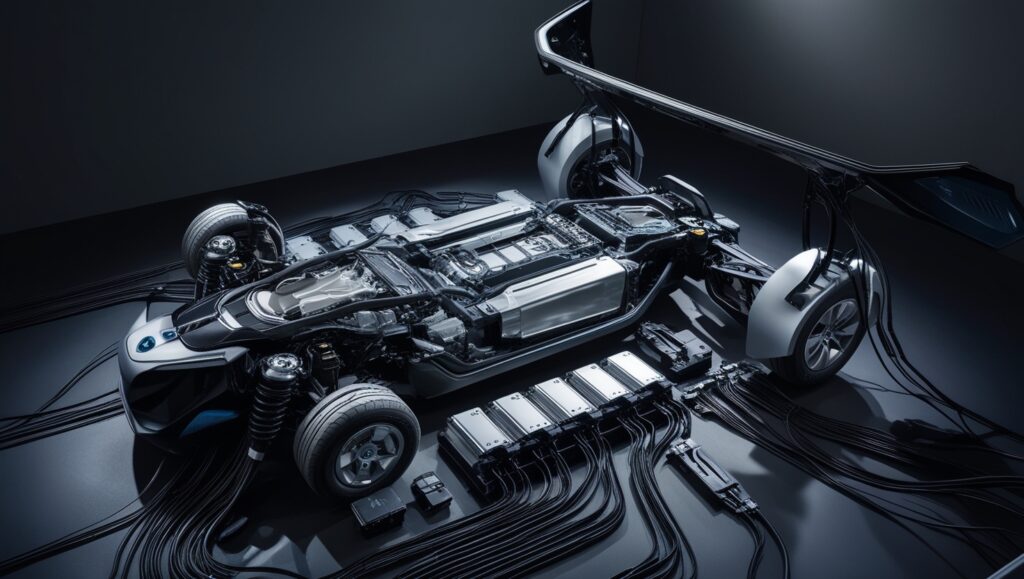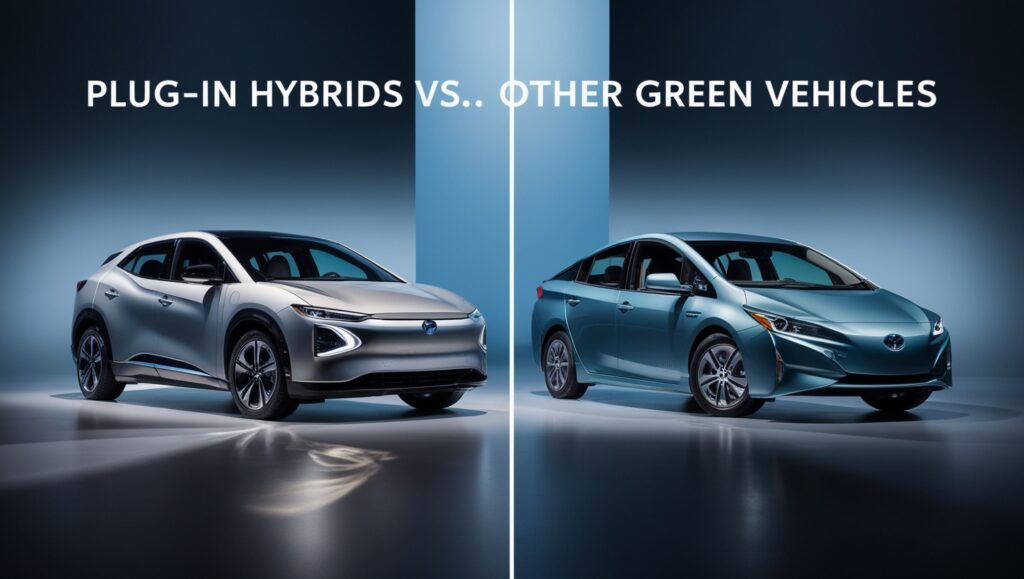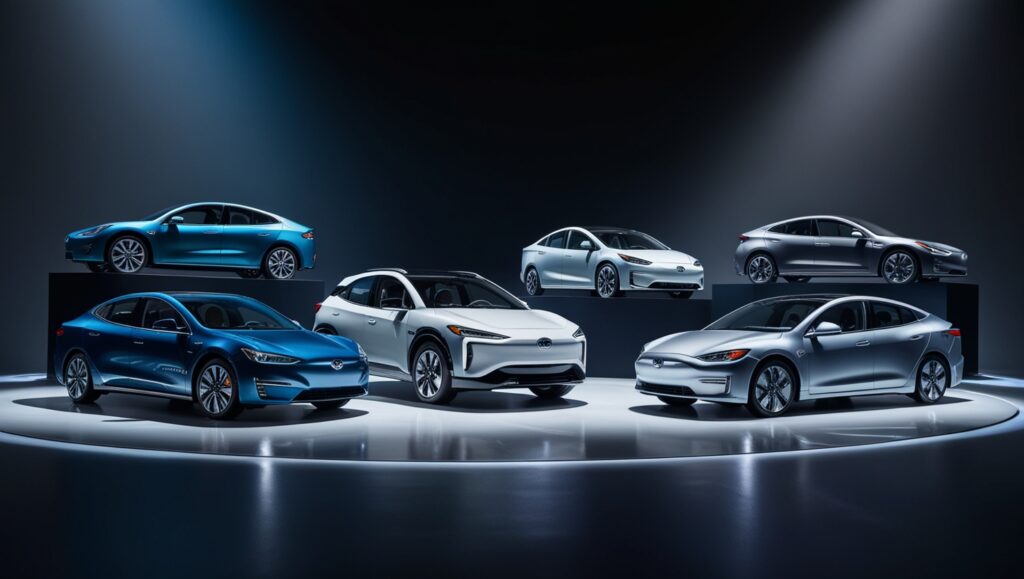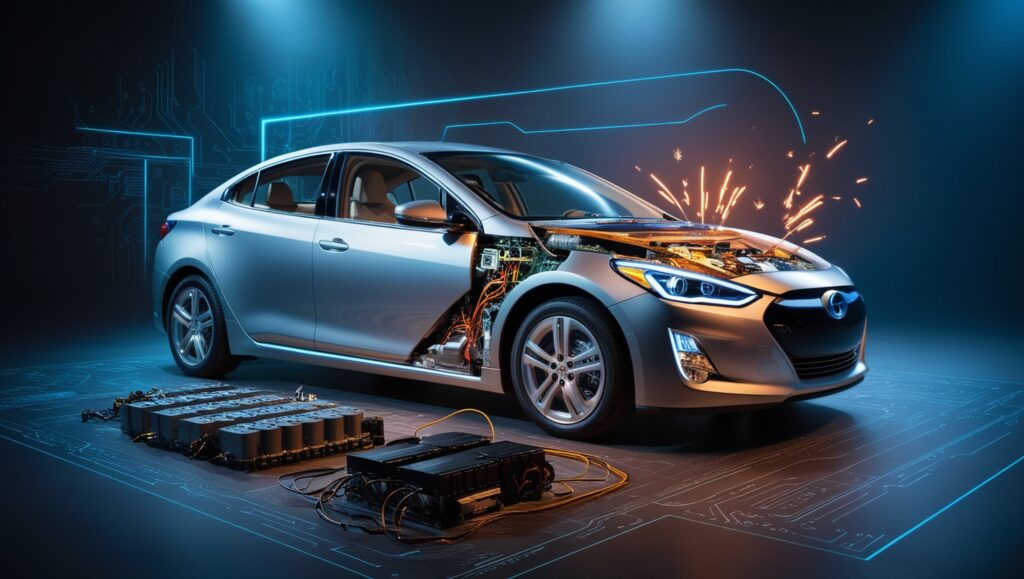Plug-in hybrids (PHEVs) are at the forefront of this movement, blending the best of both traditional internal combustion engines and electric vehicles (EVs). But what exactly are plug-in hybrids? How do they work, and more importantly, how can they help you save money? This comprehensive guide delves into the science behind plug-in hybrids, exploring their operation, benefits, and the future of transportation.
What is a Plug-in Hybrid?
A plug-in hybrid vehicle (PHEV) is a type of hybrid vehicle that can be charged via an external power source, such as a wall socket or charging station. Unlike conventional hybrids, which rely solely on regenerative braking and the engine to recharge the battery, plug-in hybrids offer the flexibility of charging the battery directly, much like a fully electric vehicle.
The Anatomy of a Plug-in Hybrid

Understanding how a plug-in hybrid works requires a look under the hood. A PHEV typically consists of three main components:
Internal Combustion Engine (ICE): The traditional gasoline or diesel engine that provides power when the battery is depleted or when extra power is needed.
Electric Motor: This motor is powered by a high-capacity battery and can drive the vehicle independently for a certain range, usually between 20 to 50 miles.
Battery Pack: The heart of the plug-in hybrid, this rechargeable battery stores energy for the electric motor. It can be recharged using an external power source, such as a home outlet, or through regenerative braking.
How Plug-in Hybrids Work
A plug-in hybrid vehicle seamlessly switches between its electric motor and internal combustion engine, depending on driving conditions and the state of charge. Here’s how it works:
Electric-Only Mode: When the battery is fully charged, the vehicle operates solely on electric power, producing zero emissions and offering a quiet, smooth ride. This mode is ideal for short commutes and city driving.
Hybrid Mode: Once the battery is depleted or if the driver demands more power, the internal combustion engine kicks in. The vehicle operates in a hybrid mode, where both the electric motor and the engine work together to optimize efficiency.
Regenerative Braking: When the driver applies the brakes, the electric motor acts as a generator, converting kinetic energy into electrical energy, which is then stored in the battery. This process extends the battery’s range and improves overall efficiency.
Charging: The battery can be recharged by plugging the vehicle into an external power source, such as a standard home outlet, a dedicated charging station, or even a public charging network. This is one of the key features that differentiates plug-in hybrids from traditional hybrids.
How Plug-in Hybrids Save Money

Plug-in hybrids offer several financial benefits, making them an attractive option for budget-conscious drivers. Here’s how they help you save money:
Reduced Fuel Costs: By driving in electric-only mode, you can significantly reduce your reliance on gasoline. Electricity is often cheaper than gasoline, especially if you charge during off-peak hours. Over time, this can lead to substantial savings on fuel costs.
Lower Maintenance Costs: Electric motors have fewer moving parts compared to internal combustion engines, which means less wear and tear. This results in lower maintenance costs over the vehicle’s lifetime. Components like oil, spark plugs, and timing belts, which require regular replacement in traditional cars, are either absent or less frequently needed in plug-in hybrids.
Incentives and Tax Credits: Many governments offer financial incentives, tax credits, and rebates for purchasing plug-in hybrids. These incentives can reduce the initial purchase price, making PHEVs more affordable. Be sure to check for available programs in your area, as they can vary widely.
Resale Value: As the demand for eco-friendly vehicles increases, plug-in hybrids tend to retain their value better than traditional cars. This means you can recoup more of your investment when it’s time to sell or trade in your vehicle.
Access to Low Emission Zones: In some cities, plug-in hybrids are granted access to low-emission zones (LEZs) or are exempt from congestion charges. This can save you money if you frequently drive in areas with such restrictions.
Environmental Impact of Plug-in Hybrids
Beyond the financial savings, plug-in hybrids also offer significant environmental benefits. By driving in electric-only mode, you reduce greenhouse gas emissions, which is crucial for combating climate change. Additionally, the use of regenerative braking means that energy is being constantly recaptured and reused, further enhancing the vehicle’s efficiency.
Comparing Plug-in Hybrids to Other Green Vehicles

When considering a plug-in hybrid, it’s essential to compare it to other green vehicles, such as fully electric cars and traditional hybrids. Each has its advantages and drawbacks:
Fully Electric Vehicles (EVs): EVs produce zero tailpipe emissions and have lower operating costs due to the absence of an internal combustion engine. However, they require a robust charging infrastructure and have limited range compared to PHEVs.
Traditional Hybrids: These vehicles do not require external charging and are more fuel-efficient than conventional cars. However, they rely more on the internal combustion engine and offer less electric-only range compared to PHEVs.
Plug-in Hybrids: PHEVs provide the best of both worlds, offering the flexibility of driving in electric-only mode for short trips and the extended range of a traditional engine for longer journeys. They strike a balance between environmental sustainability and practicality.
The Future of Plug-in Hybrids
The future of plug-in hybrids looks promising as automakers continue to innovate and improve battery technology. With advancements in Top Electric Vehicles and Top Electric Cars Brands, the next generation of PHEVs will likely offer longer electric ranges, faster charging times, and even lower emissions. As governments worldwide push for stricter emissions standards and more robust Top Electric Vehicles News, plug-in hybrids are poised to play a crucial role in the transition to a greener future.
Choosing the Right Plug-in Hybrid for You
If you’re considering purchasing a plug-in hybrid, there are several factors to consider:
Driving Habits: If you mostly drive short distances or have access to charging at home or work, a PHEV could be an excellent choice. You’ll be able to take full advantage of the electric-only mode, saving on fuel costs.
Charging Infrastructure: Consider the availability of charging stations in your area. While most PHEVs can be charged using a standard home outlet, having access to faster charging options can enhance the convenience and usability of your vehicle.
Budget: Evaluate the overall cost of ownership, including purchase price, incentives, fuel savings, and maintenance costs. Plug-in hybrids often have a higher upfront cost than traditional cars, but the long-term savings can make them a more economical choice.
Environmental Concerns: If reducing your carbon footprint is a priority, a PHEV offers a practical way to transition to cleaner driving without the range anxiety associated with fully electric vehicles.
Top Plug-in Hybrid Models to Consider

The market for plug-in hybrids is expanding rapidly, with many top brands offering a range of models to suit different needs and preferences. Here are some of the Top Electric Vehicles Brands offering PHEVs:
Toyota Prius Prime: Known for its reliability and efficiency, the Prius Prime offers a practical balance of electric range and hybrid capability.
Chevrolet Volt: With an impressive electric range and comfortable ride, the Volt is a popular choice for those looking to reduce their fuel consumption.
Ford Escape PHEV: Combining the versatility of an SUV with the efficiency of a plug-in hybrid, the Escape PHEV is ideal for families and outdoor enthusiasts.
BMW 330e: For those seeking a more luxurious option, the BMW 330e offers a premium driving experience with the added benefit of electric power.
Conclusion: Is a Plug-in Hybrid Right for You?
In conclusion, plug-in hybrids offer a unique blend of efficiency, flexibility, and cost savings. Whether you’re looking to reduce your fuel costs, lower your carbon footprint, or simply enjoy the latest automotive technology, a PHEV could be the perfect vehicle for you. With a growing selection of models and improvements in battery technology, the future of plug-in hybrids looks brighter than ever.
As you explore your options, be sure to stay informed with the latest updates on Top Electric Vehicles News, Top Electric Cars Price, Best Electric SUV, and EV News 2024. By keeping up with Top Electric Vehicles Blogs and Best Electric Vehicles Price, you’ll be well-equipped to make a decision that suits your lifestyle and budget.

Hey people!!!!!
Good mood and good luck to everyone!!!!!